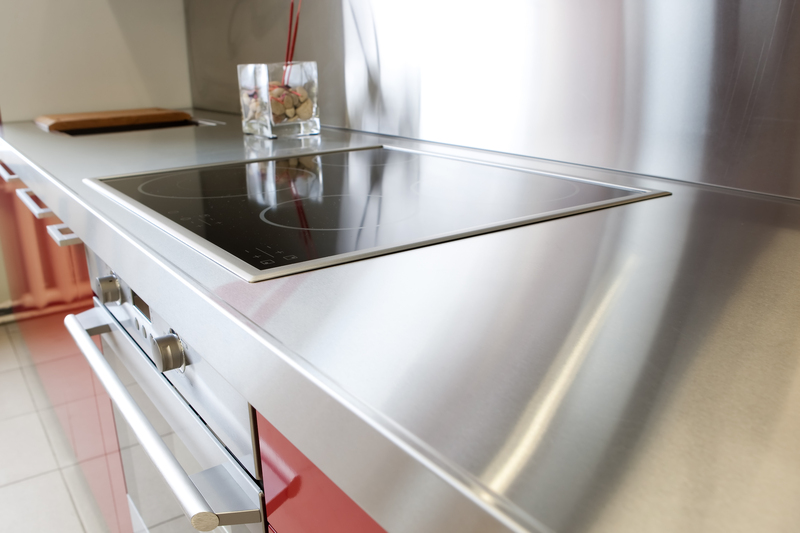Simplify Your Move Out: Basic End of Tenancy Cleaning for Tenants
Posted on 05/06/2025
Simplify Your Move Out: Basic End of Tenancy Cleaning for Tenants
Moving out of a rented home can be both exciting and overwhelming. One crucial step between you and your security deposit is end of tenancy cleaning. For many tenants, mastering the fundamentals of this process ensures a smooth transition, helps maintain positive landlord relationships, and most importantly, secures your deposit return. This comprehensive guide covers everything you need to simplify your move out through efficient, basic end of tenancy cleaning for tenants.
What is End of Tenancy Cleaning?
End of tenancy cleaning refers to the thorough cleaning of a rental property before the tenant vacates the premises. This cleaning routine is far more detailed than standard home cleaning and is usually stipulated within tenancy agreements. The goal is to restore the home to the same state as when you first moved in, excluding normal wear and tear.

Why is End of Tenancy Cleaning Important?
The key reasons why end of lease cleaning is vital for tenants include:
- Deposit Recovery: Most landlords will inspect the property against the condition at move-in. Any cleaning lapses can lead to reductions in your security deposit.
- Fulfilling Contractual Obligations: Cleaning is often a mandatory clause in tenancy contracts. Failing to comply could result in legal or financial penalties.
- Leaving a Good Impression: Clean premises help forge positive references for future rentals or sales.
- Prepares for Next Tenant: Ensures a smooth transition for new tenants moving in.
What Does Basic End of Tenancy Cleaning Involve?
A basic end of tenancy cleaning checklist focuses on all areas of your rented accommodation, leaving no space forgotten. Here's what typical move-out cleaning entails:
1. General Areas and Living Spaces
- Dusting: All surfaces, including shelves, skirting boards, and baseboards
- Vacuuming: Floors, carpets, and upholstery
- Washing Floors: Use suitable cleaners for different floor types
- Light switches, plug sockets, and door handles cleaned and disinfected
- Curtains, blinds, and windowsills wiped or laundered
- Radiators and vents dusted and wiped
2. Kitchen Cleaning Tasks
- Countertops and tiles washed
- Cabinets and drawers emptied, cleaned inside and out
- Appliances cleaned (oven, microwave, fridge, freezer, dishwasher)
- Sinks and taps descaled and polished
- Floor mopped and degreased
- Extractor fans and hoods degreased
3. Bathroom and Toilets
- Basin, bathtub, and shower scrubbed and descaled
- Toilet cleaned and disinfected
- Mirrors and glass surfaces polished
- Tiles washed and limescale removed
- Floors swept and mopped
- Cabinets and shelves wiped
4. Bedrooms
- All surfaces dusted
- Wardrobes and drawers wiped inside and out
- Floors vacuumed and mopped as necessary
- Windows cleaned from inside
5. Other Essential Areas
- Entrance hall and stairs cleaned
- Ceilings checked for cobwebs
- Marks cleaned from doors and walls where possible
Steps to Simplify Your Move Out Cleaning
1. Plan Ahead
Preparation is key. As soon as you know your moving date, start planning your cleaning schedule. Break tasks into manageable sections to avoid last-minute stress. Check your original inventory or check-in report to see the condition in which the property must be returned.
2. Gather the Right Supplies
Ensure you have all necessary cleaning materials before starting. Basics include:
- All-purpose cleaners
- Glass cleaner
- Limescale remover
- Baking soda and vinegar (for eco-friendly cleaning)
- Mop and bucket
- Microfiber cloths and sponges
- Rubber gloves
- Vacuum cleaner
3. Work from Top to Bottom
Always clean from the top of a room downwards. This means dusting ceiling corners and shelves before vacuuming the floors. That way, any dirt falling from above will be cleaned up at the end.
4. Focus on High Traffic and "Touch" Areas
Pay special attention to spaces such as door handles, light switches, and appliance handles. These collect fingerprints and bacteria. Disinfect thoroughly!
5. Don't Forget Hidden or Overlooked Spots
- Behind appliances (fridge, washing machine)
- Inside cabinets and drawers
- Air vents and extractor fans
- Window sills and tracks
- Under beds and furniture
Common Mistakes Tenants Make in End of Tenancy Cleaning
To ensure your move-out cleaning is a success, avoid these common pitfalls:
- Ignoring the oven and fridge: Landlords often check these closely.
- Leaving personal belongings behind: Always clear out thoroughly to avoid deductions.
- Partial cleaning: Don't just spot clean - the entire property must shine.
- Neglecting the bathroom: Limescale, soap residue, and mold are red flags during inspections.
- Forgetting window and curtain cleaning: Dirty windows or dusty curtains let down the overall appearance.
DIY vs Professional End of Tenancy Cleaning
Tenants often face a choice when preparing to move out: Should you do the cleaning yourself, or opt for a professional cleaning service? Both options have their pros and cons.
Doing it Yourself
- Cheaper: DIY is usually cost-effective.
- Flexible Timing: Clean at your own pace.
- Attention to Detail: You can target specific "problem areas".
- More labor-intensive and may lack professional finish.
Hiring Professional Move Out Cleaning Services
- Time-saving: Professionals complete the job swiftly and thoroughly.
- Expertise: Specialized tools and products for stubborn grease, limescale, and stains.
- Deposit Guarantee: Some companies offer a re-clean guarantee if your landlord is not satisfied.
- Higher cost but less risk of deposit deductions.
If you have a large property or limited time, consider investing in a professional end of tenancy cleaning service for peace of mind and the best results.
Tips to Ensure a Stress-free End of Tenancy Clean
- Check your lease: See if specific cleaning requirements or professional cleaning is stipulated.
- Photograph before & after: Document the property's cleaned condition to resolve disputes.
- Leave sufficient time: Start early--last-minute rushes lead to missed areas.
- Work as a team: Enlist help from friends or co-tenants.
- Dispose of rubbish properly: Landlords often deduct from deposits for leftover waste or items.
- Do a final walkthrough with your landlord using the inventory checklist.
How to Clean Specific Problem Areas
Kitchen Appliances
- Oven: Use a heavy-duty degreaser or eco-friendly mix of baking soda and vinegar. Don't forget oven trays and racks.
- Fridge & Freezer: Empty, defrost, and wipe shelves inside and out. Leave doors ajar to prevent mold.
- Dishwasher & Washing Machine: Run a hot, empty cycle with specialist cleaner or vinegar.
Bathrooms
- Limescale: Vinegar soaks and scrubbing pads work well on taps and shower heads.
- Mold: Treat with specialist spray or diluted bleach.
- Grout: Scrub with an old toothbrush and baking soda paste.
Walls and Stains
- Use a gentle cleaning solution to spot clean scuffs and marks on walls.
- For stubborn stains, consider using a magic eraser or seeking landlord advice.
Post-Cleaning Checklist Before Moving Out
- Ensure all keys, fobs, and remotes are returned.
- Turn off all appliances and utilities as required.
- Inspect each room against inventory photos and checklist.
- Take your own photos as evidence.
- Dispose of any final rubbish or recycling.

Frequently Asked Questions
Can my landlord charge me for professional cleaning?
In many regions, landlords cannot demand professional cleaning unless you received the property in that condition. However, you must return the property "reasonably clean". Always check your local tenancy laws.
How long does end of tenancy cleaning take?
For a standard two-bedroom apartment, thorough cleaning may take 5-8 hours. Larger homes may require a full day or more.
Is it worth hiring a professional?
If you value your deposit or are pressed for time, a professional end of tenancy cleaning company can offer peace of mind and specialized attention to detail.
Conclusion: Make Moving Out Easy with Proper End of Tenancy Cleaning
Moving out doesn't have to be stressful. By organizing your end of tenancy cleaning and following a basic yet thorough plan, you'll leave behind a spotless property. Whether you choose to DIY or hire a cleaning service, the effort ensures a stress-free end to your tenancy, increases your chances of a full deposit return, and gives closure to this chapter of your tenancy journey.
Remember, good cleaning means good beginnings elsewhere--embrace your move out with confidence, knowing your home is spotless and ready for its next occupants.





